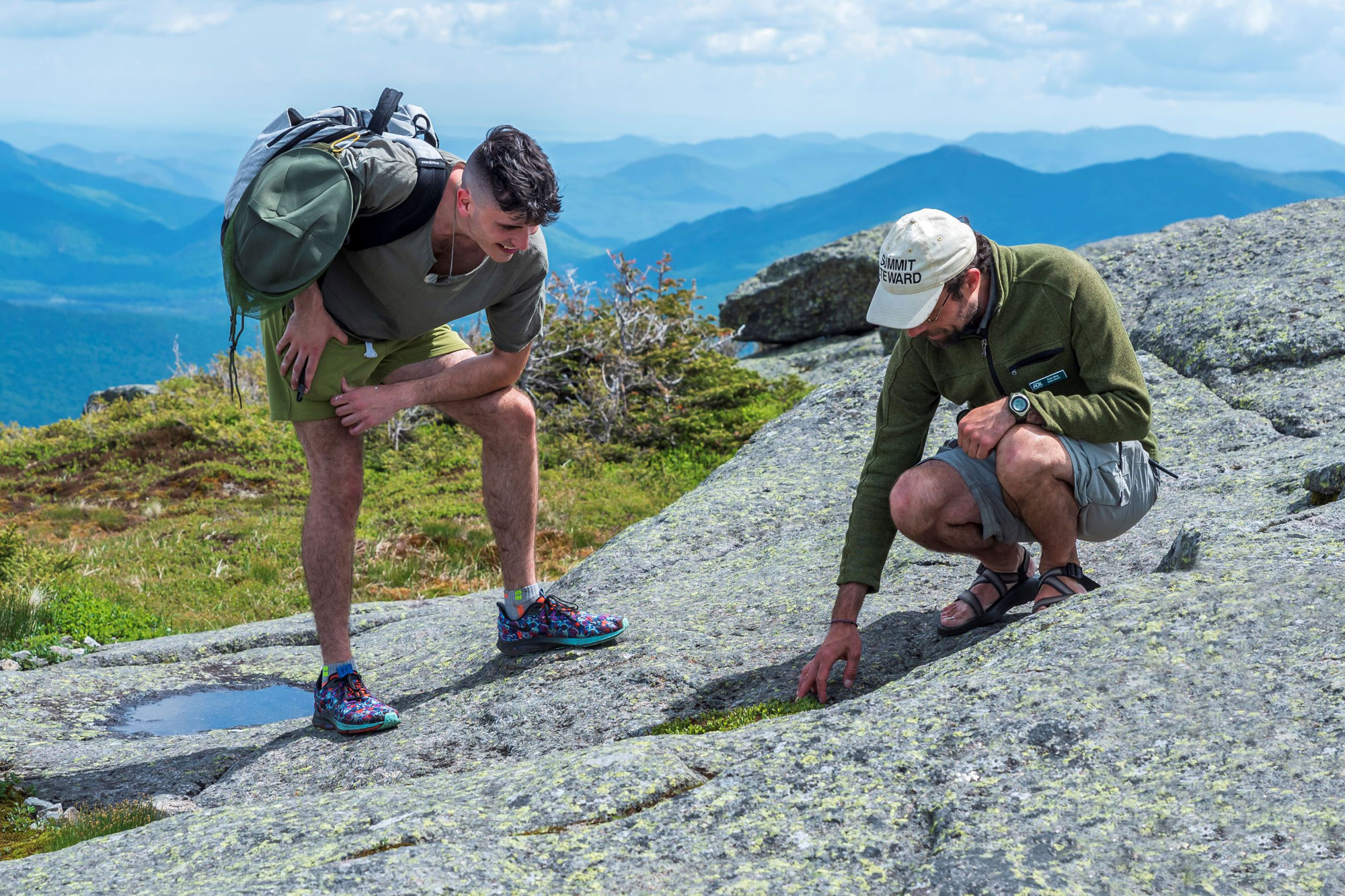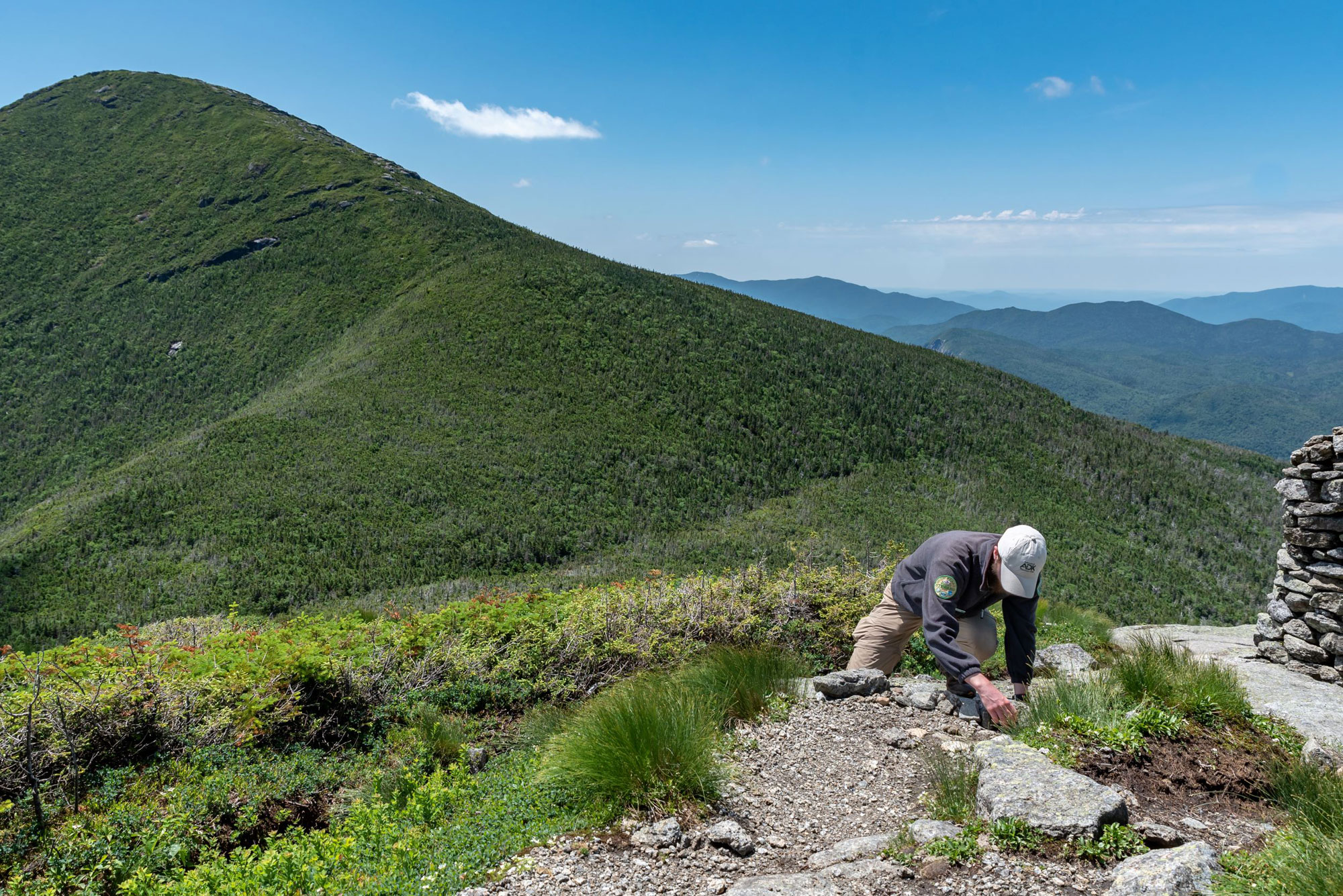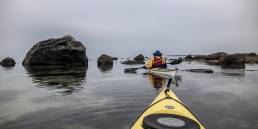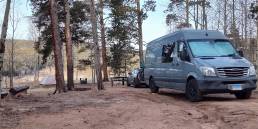I grew up just outside the Adirondack Park’s “blue line,” and have spent many years recreating in the mountains of the High Peaks region and beyond. I have often looked for ways to give back to this wilderness so responsible for shaping who I am. I have been a longtime member of the Adirondack Mountain Club (ADK), and at times have donated money or time to the club and its initiatives. Looking for another way to help protect and enhance this unique area, I decided this year to sign up to serve as a volunteer with the Adirondack High Peaks Summit Stewardship Program. While I had seen Stewards working on summits in my travels, and had a general idea of their mission, my training and work with the program have provided me with new insights and a better awareness about how vital they really are.

What do they do?
The Summit Stewardship Program was begun in 1989, and is a partnership between ADK (Adirondack Mountain Club), the Adirondack Chapter of The Nature Conservancy (TNC), and the NYS Department of Environmental Conservation (NYSDEC). Since the program’s inception they have focused on three main components of their mission: educating the public about the alpine ecosystem, maintaining above treeline trails, and conducting crucial scientific research and observation.
The work of the Summit Stewardship Program has slowly reversed some of the long term damage that increased human presence has had on a rare alpine ecosystem. The species of plants found on New York’s highest summits are left over from thousands of years ago when the glaciers receded, leaving the limited topography of only about 173 acres of alpine habitat as the only areas where these plants could survive. The fragile alpine vegetation remaining can normally only be found much farther north in latitude, well into Canada. But for all it’s climate hardiness, it’s still very delicate and susceptible to permanent damage by the crushing steps of uneducated hikers who wander off bare rock and established trails above treeline.
Thankfully, the hard work of Stewards has in fact led to some definitive successes. Since 1999 the program has used a detailed Photopoint Monitoring Project to analyze alpine regrowth, habitat change, and vegetation loss or gain. The repeat photography study uses 59 photopoints across 9 summits, along with baseline photos going back into the 1960’s to carefully document the impact. A 2009 analysis showed that summits which had a regular Summit Steward presence have recovered significantly more than those without. And even with the increase in visitors the mountains have seen since 2009, that data has shown that there’s been no statistically significant change, indicating that summit Stewards are continuing to hold the line.

A Day in the Life
Kayla White, the Stewardship Manager with ADK has been with the group for nearly a decade, working as a crew member at the ADK’s historic Adirondak Loj as well as at the backcountry Johns Brook Lodge, among other positions. In 2014 she became a Summit Steward and quickly moved up through the ranks becoming a Chief Steward, and then eventually the leader of the program in 2017.
I attended a virtual training day with live presentations and recorded videos on a wide variety of informative topics including the history of the program, information about rare alpine vegetation, the techniques and strategies of interacting with hikers in the field, and logistics of the work including materials, radio protocols, and cooperative efforts with the NYSDEC.
Next, I scheduled several days to train alongside Kayla in the field on the summit of New York’s second highest peak Algonquin Peak. Working alongside Kayla was a great way to put what I had learned into action, while still having the support of a knowledgeable expert like Kayla.
One of the first challenges for Stewards is simply getting to work. Stewards start off into the mountains early in the morning, climbing with a full pack including their personal gear as well as radios and program specific gear. Stewards aim to reach their summit locations on Algonquin Peak, Mount Marcy, Cascade Mountain, Mount Colden, and other more remote summits by around 9:00 a.m. Once they get there, Stewards will spend their whole day above treeline in the often fierce weather of these High Peak summits. As I quickly found out on my first cold and rainy training day, being prepared with rain gear, extra layers, and hats and gloves, even in the summer is crucial.
On the summit of Algonquin, Kayla gave me a guided tour of the alpine vegetation with her extensive knowledge, demonstrated a variety of methods of initiating conversations with summit hikers, and even guided me through the proper rebuilding of a cairn to guide hikers above treeline.

Looking Ahead
Kayla and the Summit Stewards have seen a great deal of change since she joined the ADK. Visitor numbers on the mountains (counting hikers is one important job of the Stewards) have doubled. As a result, the ADK has taken steps to increase outreach to educate hikers even before they hit the summits. They do this in part by providing Leave No Trace outdoor skills and ethics programming to a variety of groups, as well as using social media to reach more people.
As a longtime educator and hiker, I have thoroughly enjoyed the experience of combining these two passions while helping contribute even if in a very small way to the conservation of some of the Adirondacks most fragile natural resources. Not everyone can dedicate that time, though. But, Kayla explained, there are other ways to help out:
First, be a rockstar! When travelling above treeline be sure to stay on bare rock and avoid walking on soil, gravel, and of course plants (which include mosses, grasses, and shrubs). Next, you can educate others like family and friends about the importance of alpine stewardship. You can also donate to the Adirondack Mountain Club or to the #507 Fund or the Dr. Norton G. Miller Memorial Fund, two endowments that specifically support the Summit Stewardship Program specifically. Finally if you would like to volunteer as a Summit Steward like I did you can find out more here.

Lucas LaBarre
Lucas LaBarre grew up in the Adirondack Mountains of upstate New York. An avid year round hiker, Lucas has completed many peakbagging lists in the Northeast including the Adirondack 46, the Winter 46, the NH 48, the NE 67 and the NE 111. He also enjoys backcountry snowboarding and splitboarding throughout the Northeast and beyond. He lives in Albany NY with his wife and daughter and works as an educational administrator.




